Causal Islands Berlin
“What if people could just… do things?”
This was one of the themes of Causal Islands Berlin, the fourth iteration of the “Future of Computing” conference, and the first one to take place in Europe.
I flew out from Vancouver last week to reconnect with some old friends and meet new potential collaborators. I have been involved with CI since the beginning but this was the first one I could attend in person. The Hallway Track is legendary, and I can tell you I made so many great connections here in Berlin!
The talks covered the technical and the artistic, and there was an underlying message of keeping the bar to participate low so that more people can engage with technology on their terms: less power to giant centralized corporations, less siloing of our information, less intrusive surveillance, less disparity. But this is about more than merely the individual, it is about computing with our communities. To paraphrase one of the presenters (an actual poet who said this much better than I can reproduce here):
I want to co-train and co-own an LLM model with my friends. I would love to see me in their work and them in my work, since this is already happening.
💞
More local control, more agency, more flexibility, more room to remix and reform and customize software, more collaborating with friends, more parody and jokes, and many more experiments. More of what we saw on the Causal Islands stage.
The videos of the talks will be released in the next few weeks. I can’t wait to share them!
Thank you to all the attendees and supporters of Causal Islands. I look forward to continued discussion on the Causal Islands Discord, and I look forward to the next event!
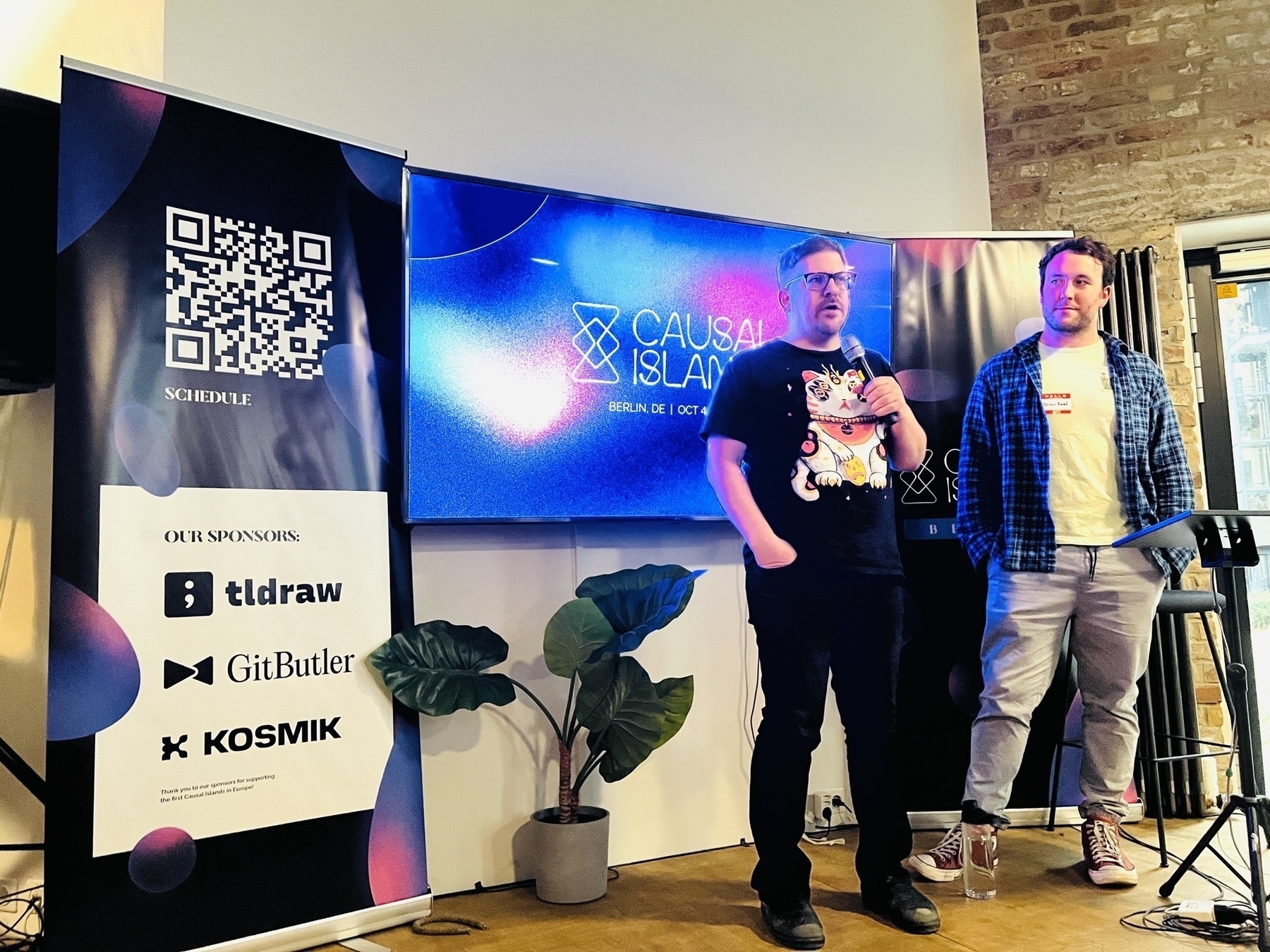
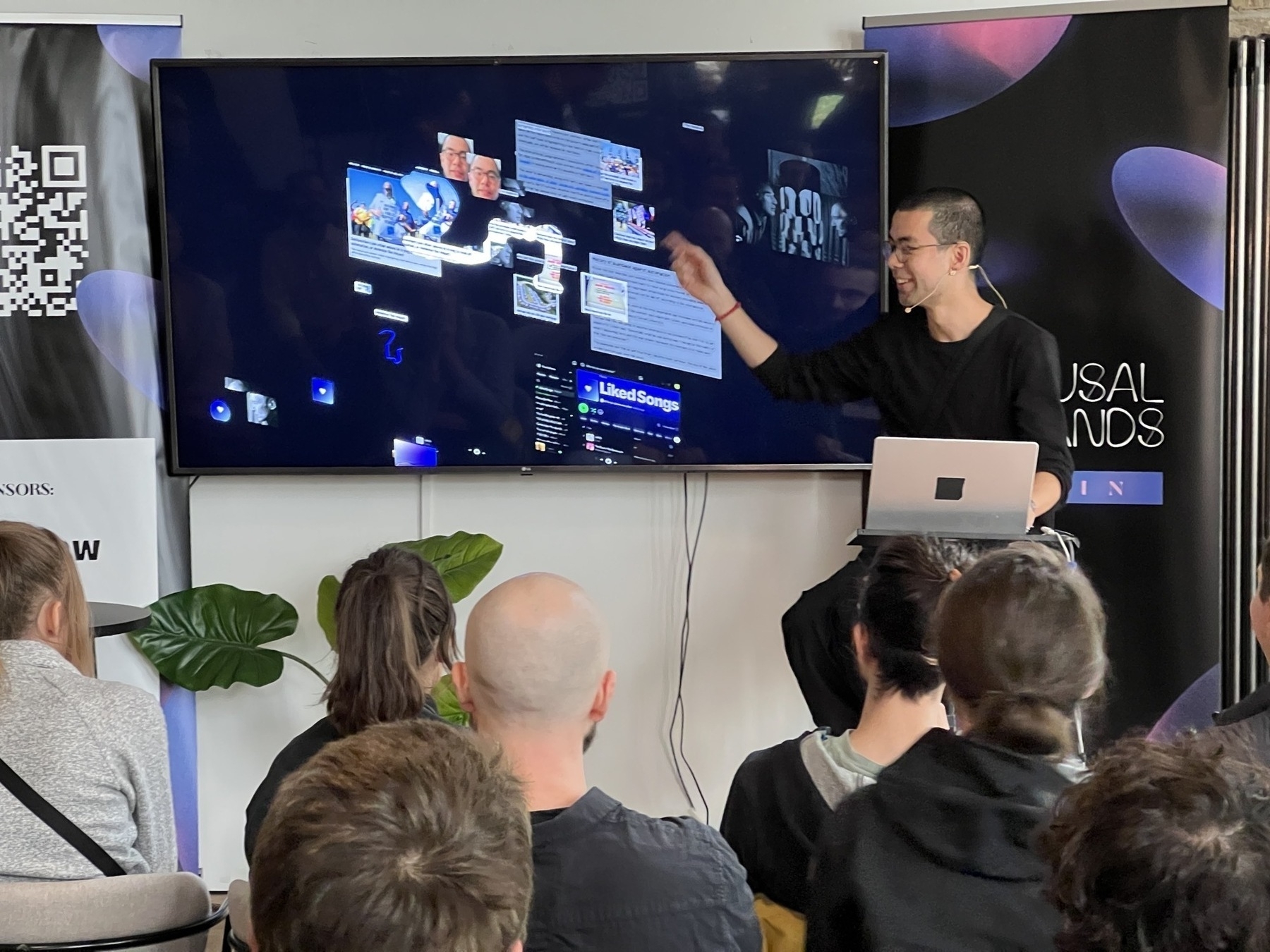
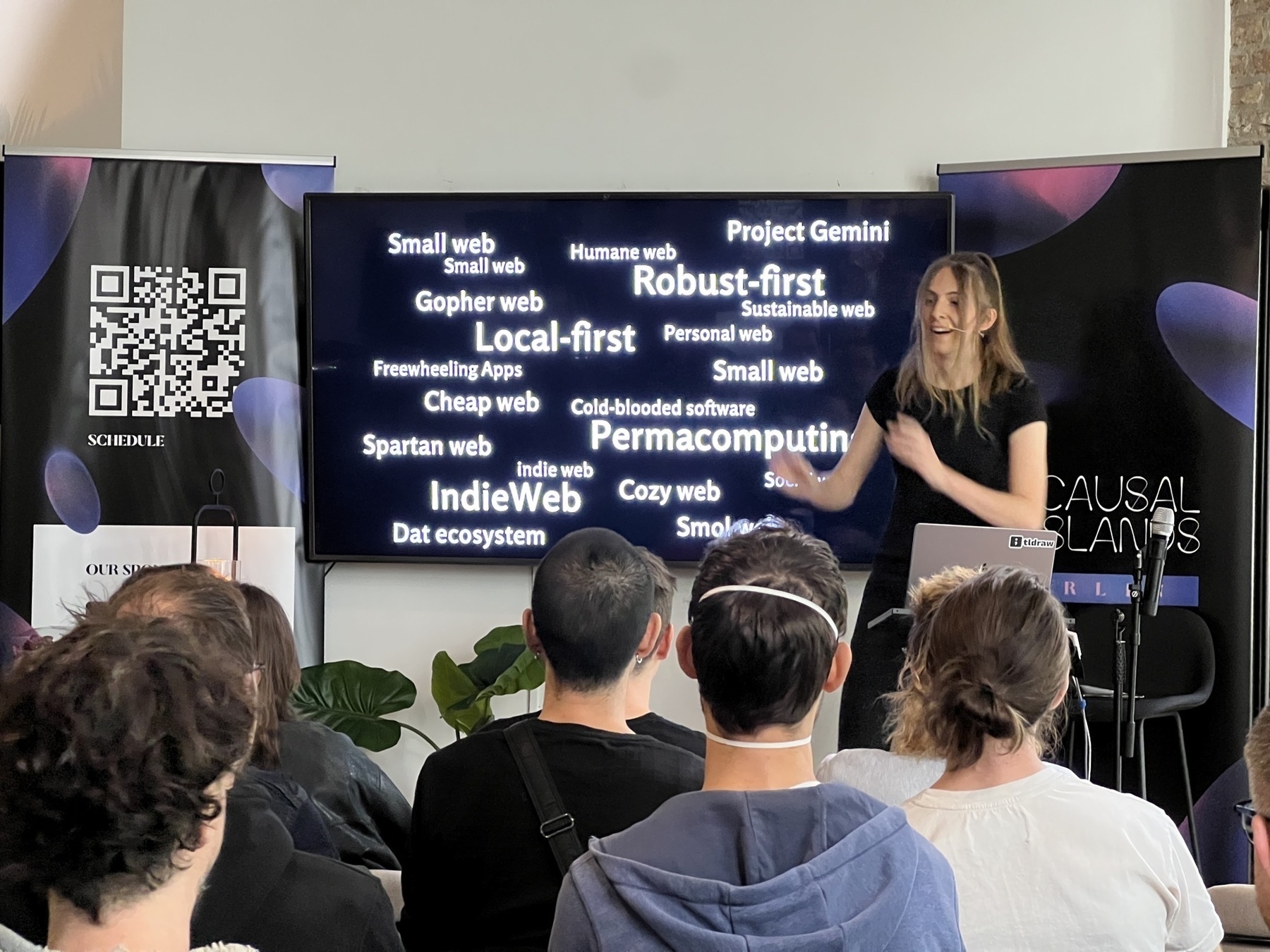
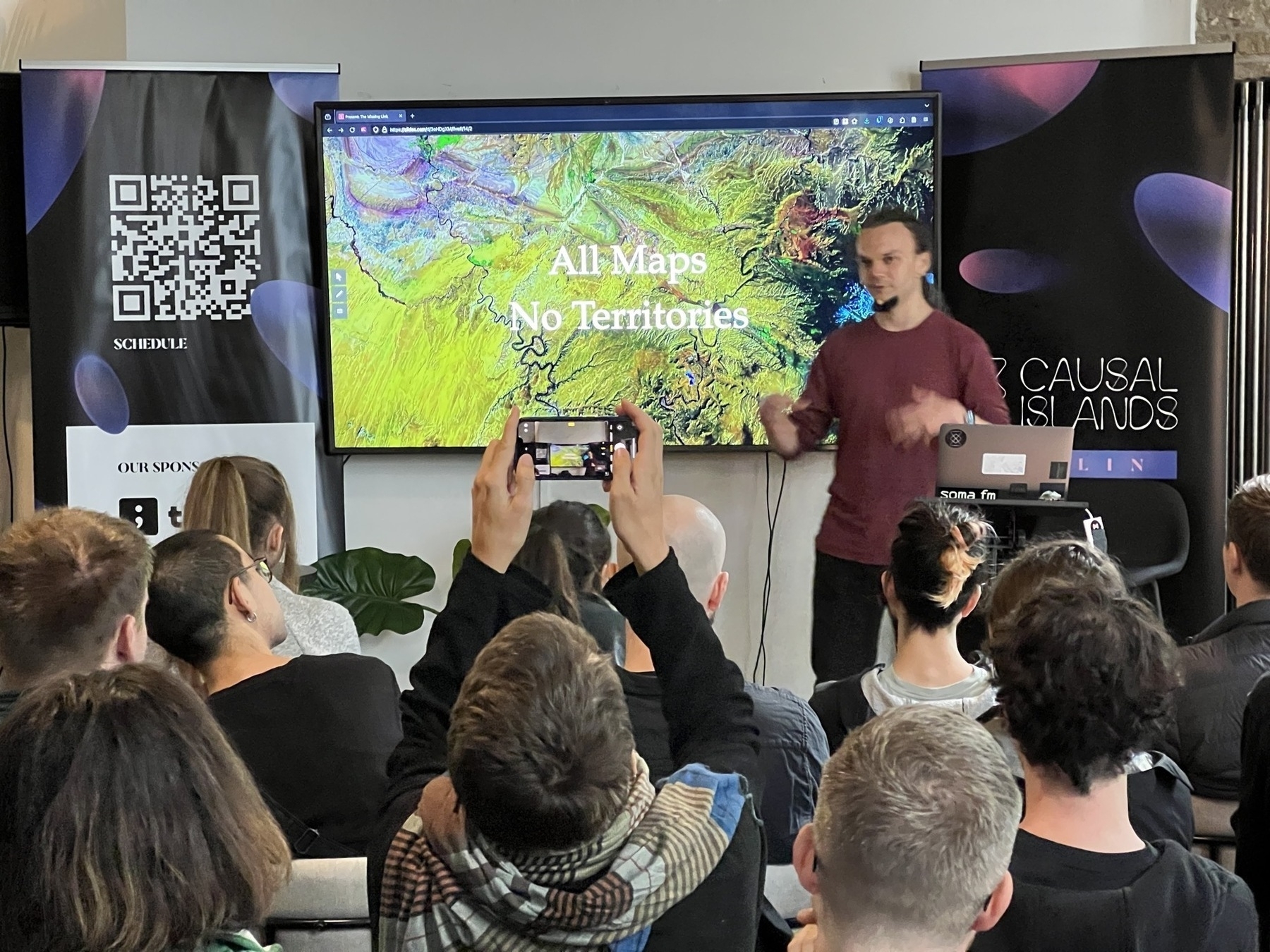
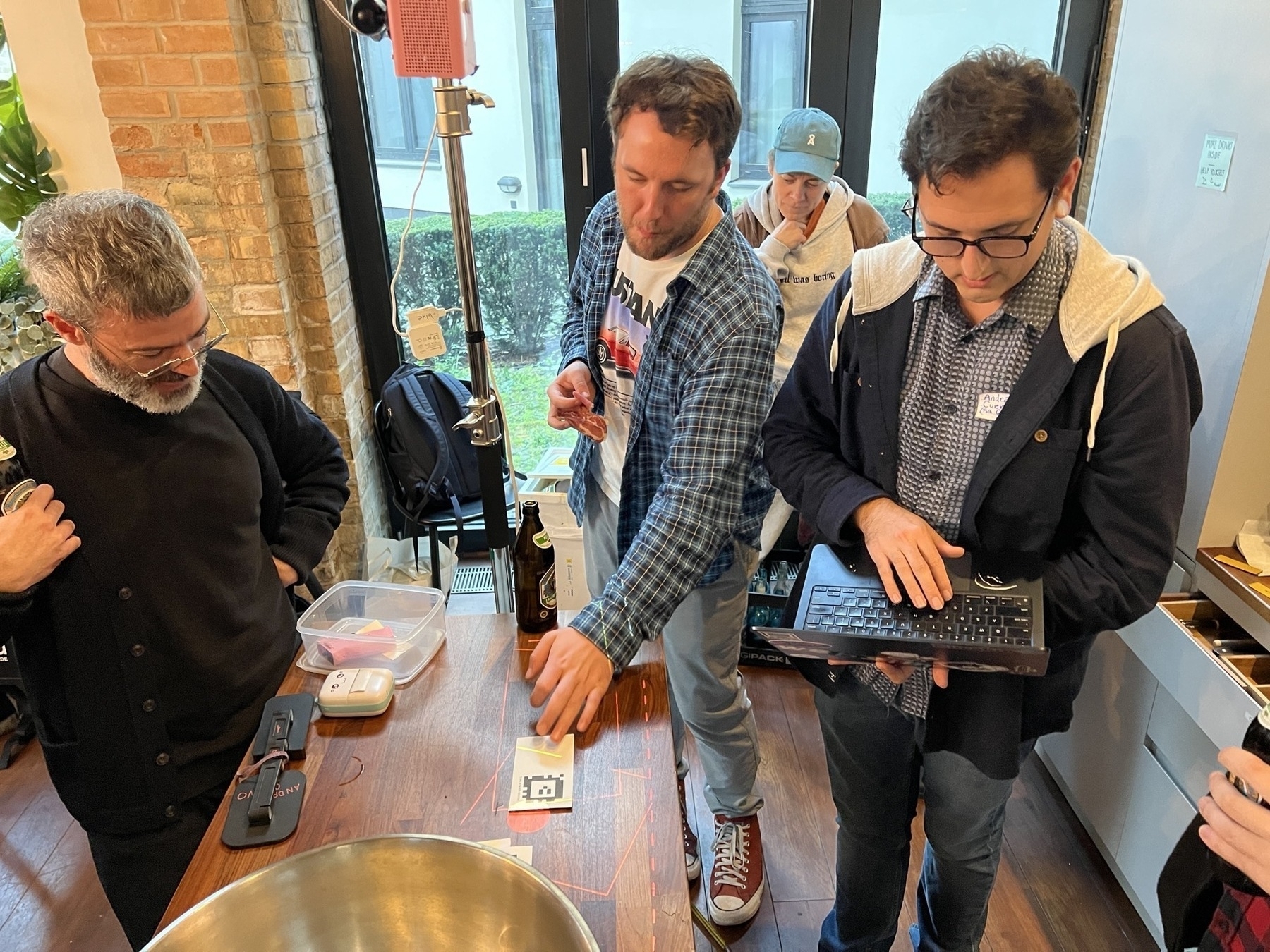
(You can see some more snaps on Bluesky)
DJ party at the cafe in Berlin
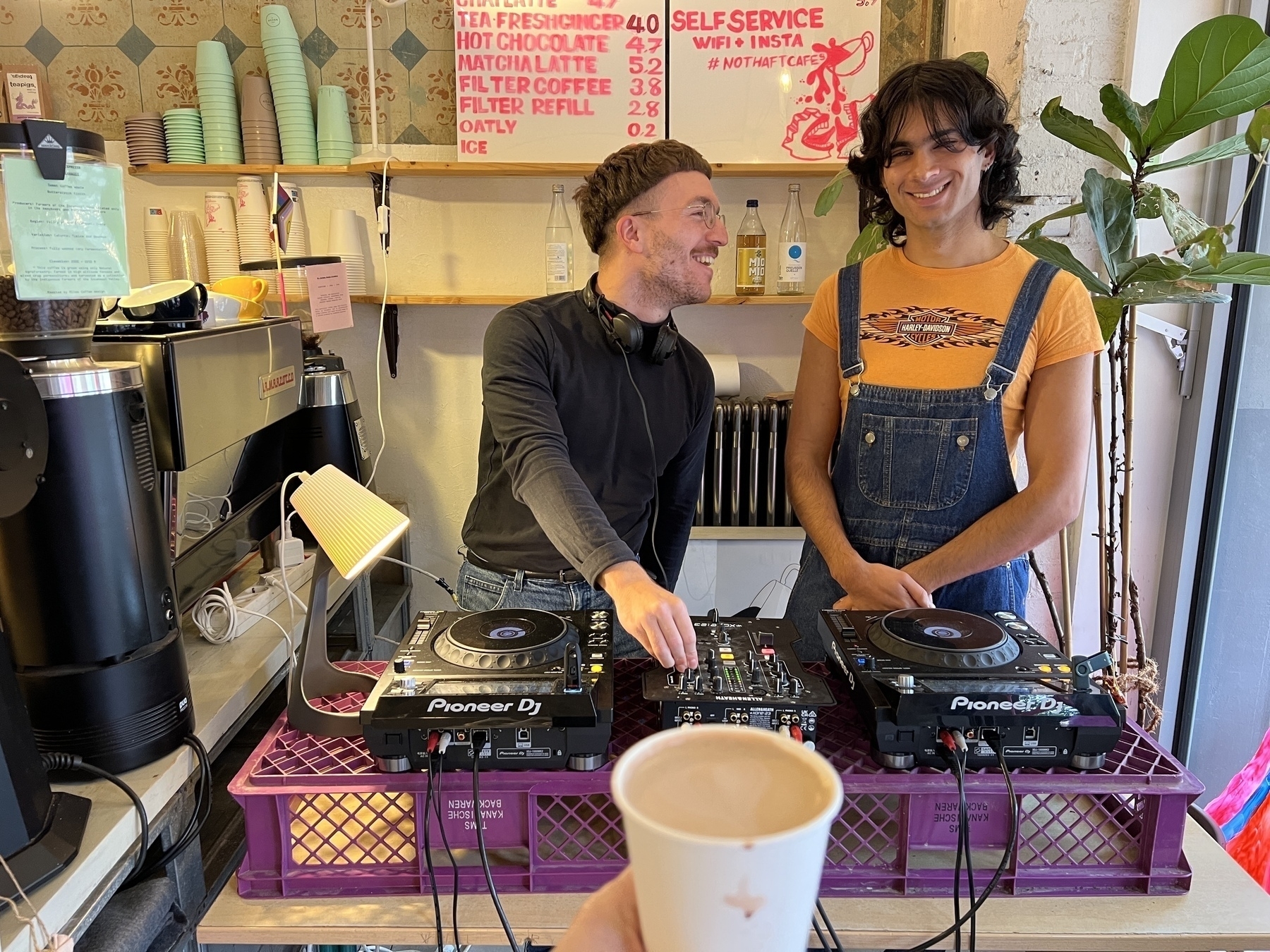
What’s gud, peasants?
CURRENT STATUS: Baroque
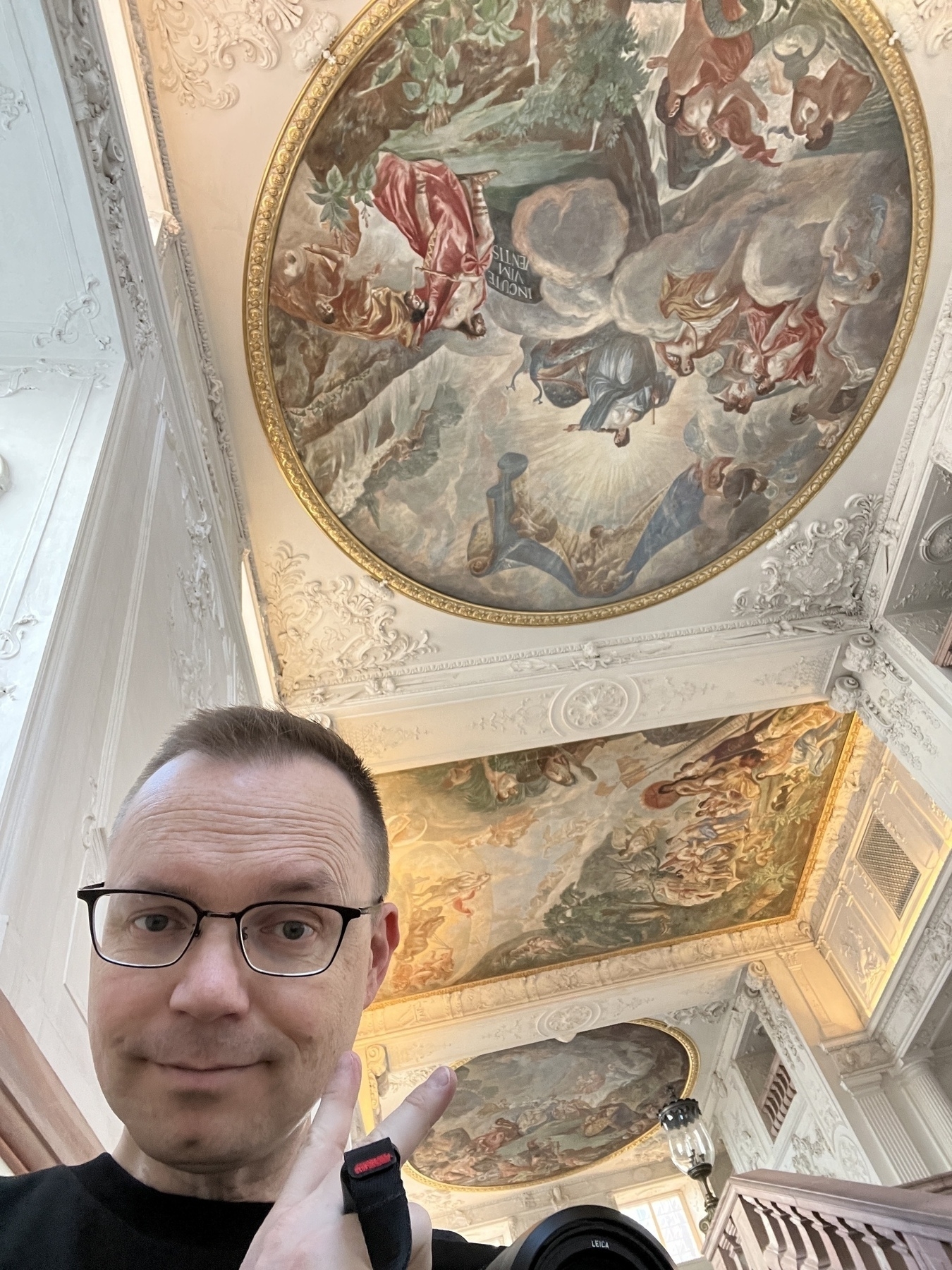
Feeling terribly jet lagged? Some Classic Quebec Poutine will help right? Right?

I missed sending out my personal newsletter last month so this is a double, but I kept it short.
Had a nice time walking around Mannheim taking selfies in front of old/impressive things
Now that I’ve been in Germany for more than 24 hours, some impressions:
🚗 fast driving 🎨 graffiti ✝️ churches ⛪️ more churches ◼️squat square buildings 🗼lotta round towers…? 🍞 bread 🥖
Took the train from Frankfurt to Mannheim. Really enjoyed seeing some of the countryside. Inter-city train travel is so civilized… reminds me of Japan
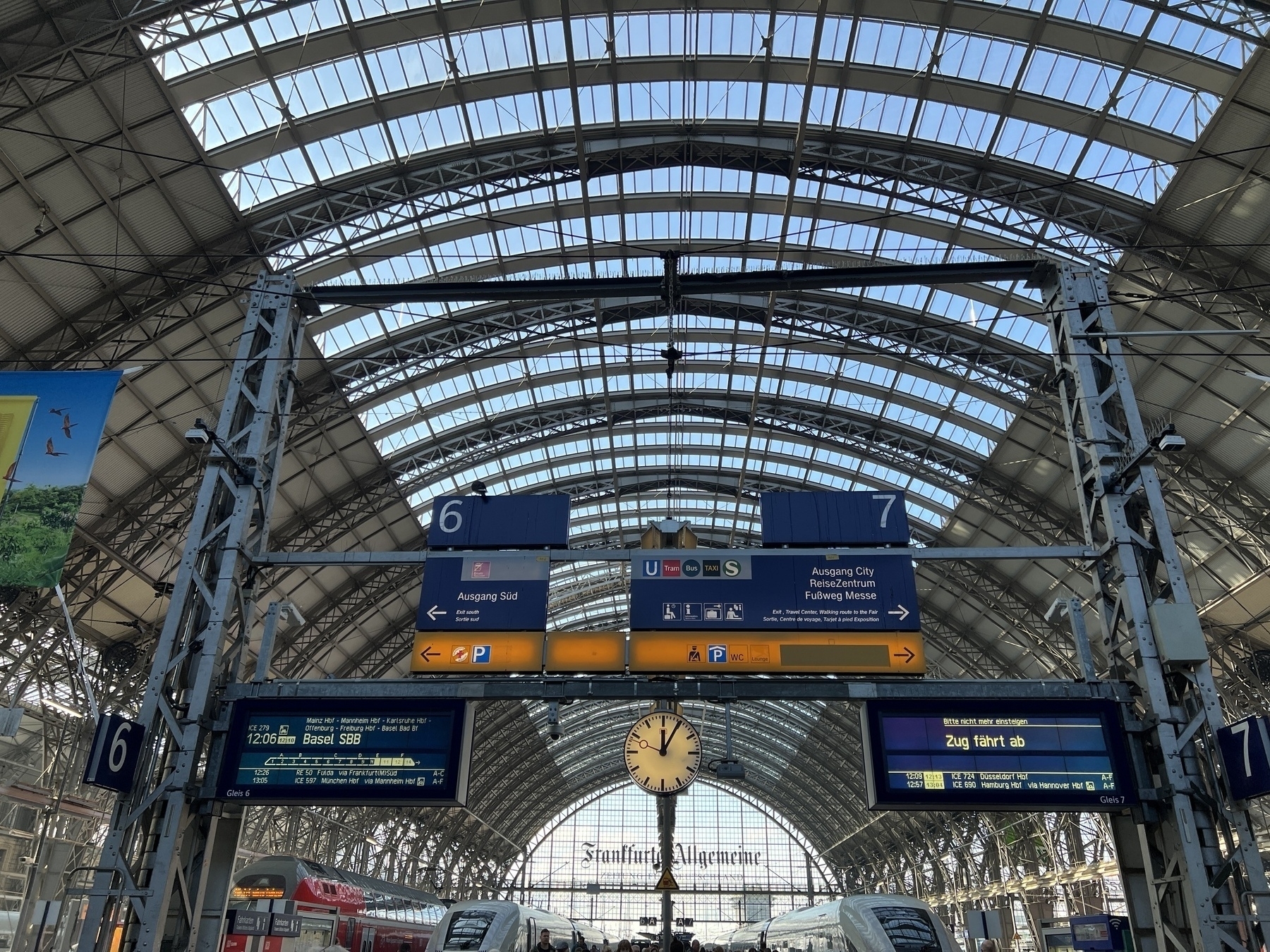
Wandering around some European plazas recently myself, I am so glad for this! Amazing that they turned these lovely spaces into car parks!
Started listening to Best Served Cold by Joe Abercrombie on the plane to Germany. Loved his First Law series and looking forward to getting back into the universe! 📚
Made it to Frankfurt 🇩🇪
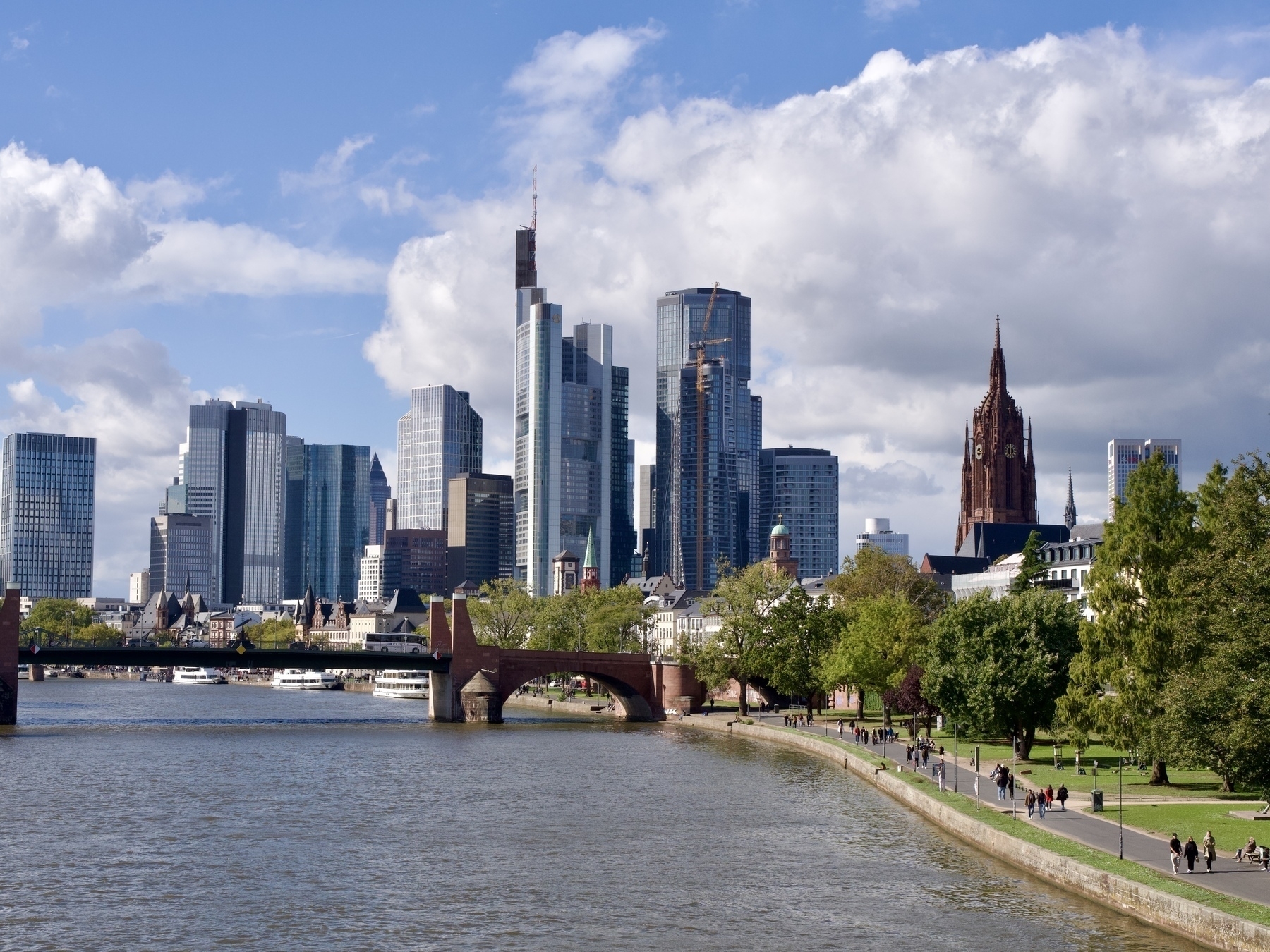
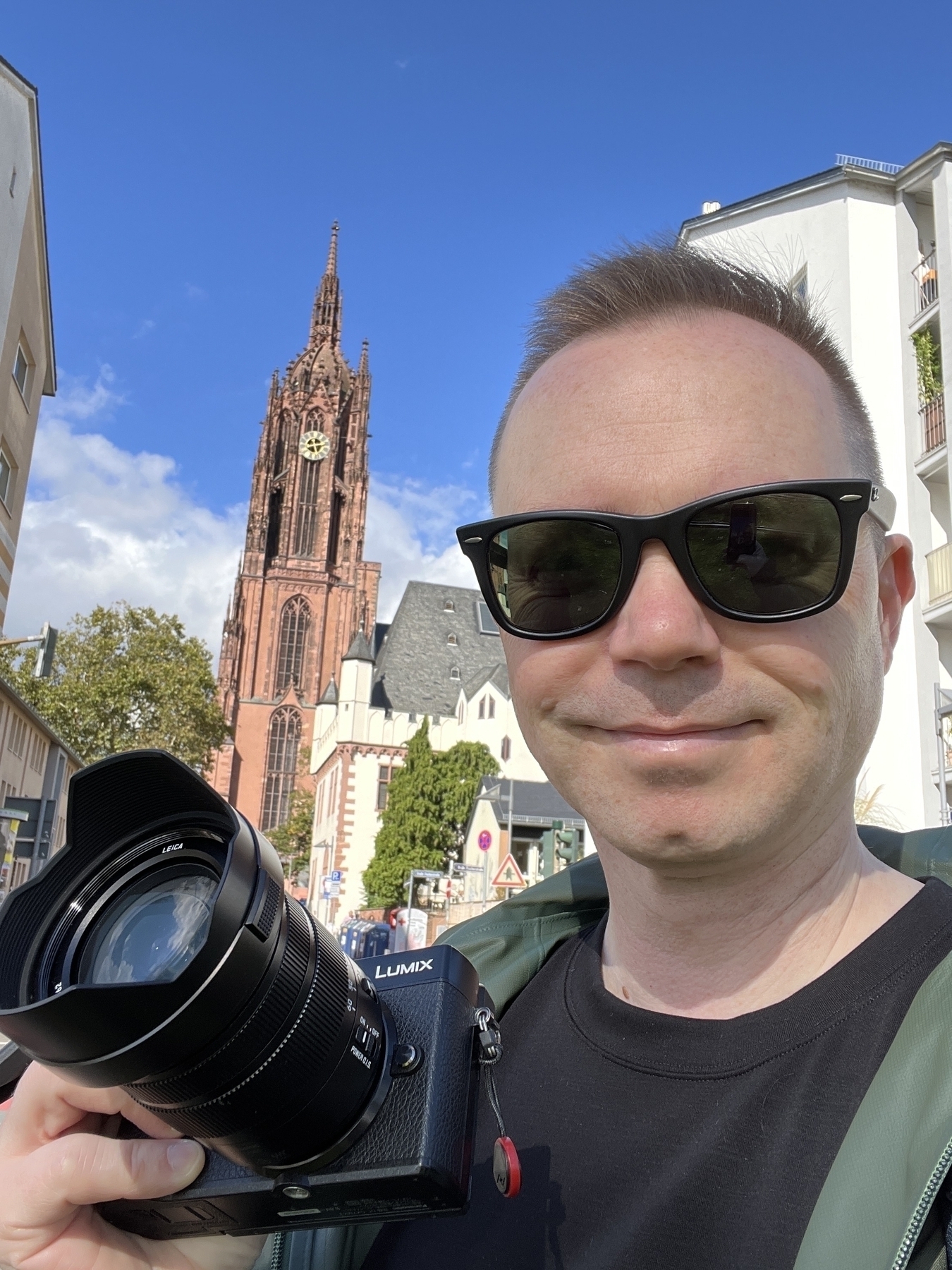
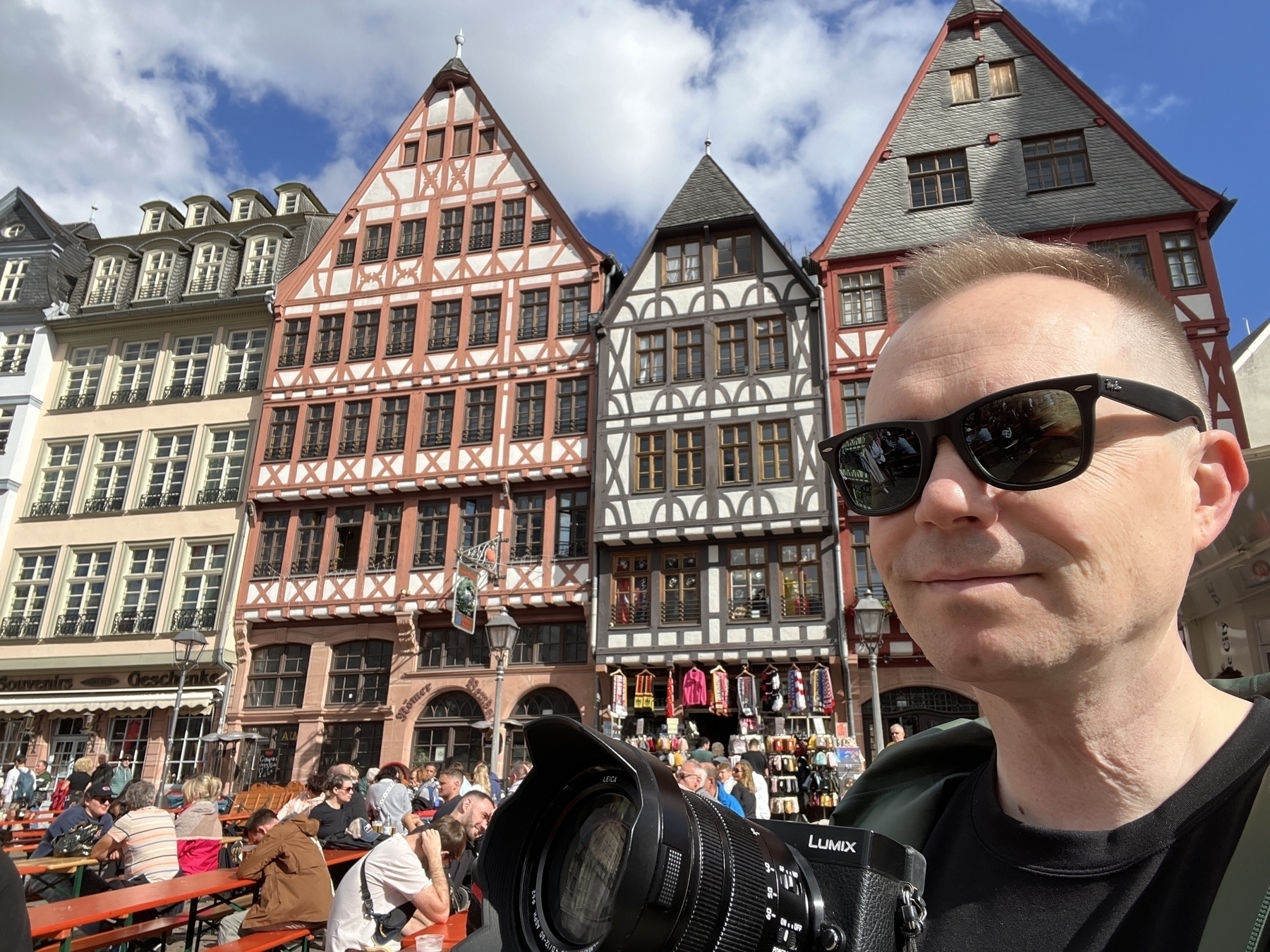
(Squeezed out that long blog post just as the call for boarding happened! Enjoy the Taiwan photos. I will be posting lots of Germany photos next)
Taiwan Trip Report pt 3: Taipei
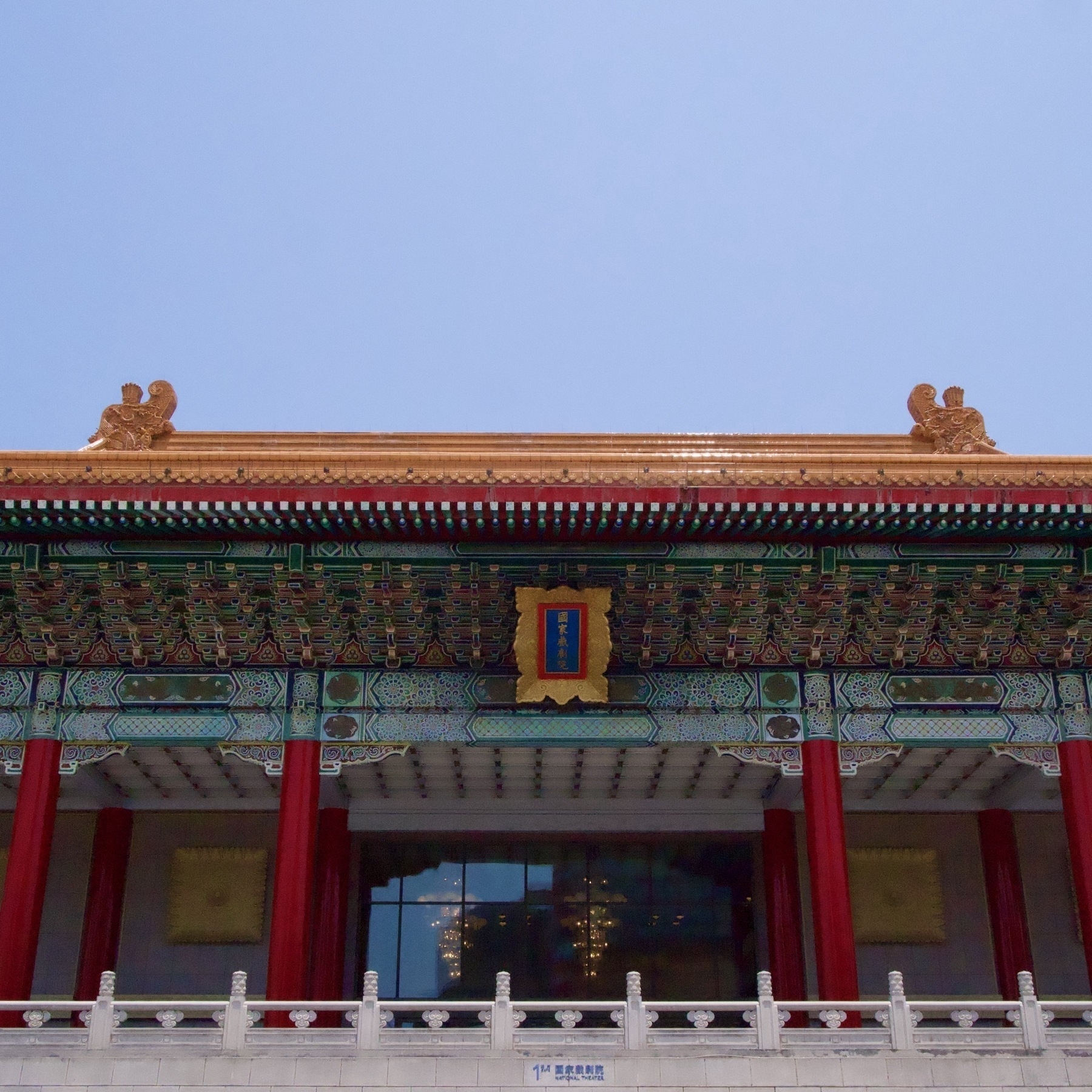
This post is part of a series. See the introduction here →
Despite being the beginning of May Taipei was very warm. The sun was out as we walked the wide sidewalks around Taipei Station downtown, cars and scooters zooming by. Even when it was cloudy, crossing the Keelung River through the tech area of town (I spotted the Foxconn tower), the lush green mountains of the north were a tropical reminder. When we took the sky train to the eastern part of the city at Nangang, zooming along the edge of the pretty lake at Dahu Park, I was thankful I brought my sandals.
Half our time in Taiwan was spent in Taipei, a city that houses nearly 40% of the country’s population. It was nice to see some other cities and towns (as with most countries the capital city/economic center is not representative) but Taipei is a very enjoyable place. We travelled on trains and buses quite a bit and walked a few of the neighbourhoods. Taipei is a bustling city with way better international food than Japan (outside of Tokyo I suppose). Between trips to nightmarkets like at Raohe Street where we saw some great “bird fortune-telling”, we had tacos and steak and tacos again! The second floor of Taipei Station has all sorts of Thai and Korean and Japanese food. One late night when I was on my own, I finally partook in a Taiwanese Mos Burger, which actually was different than in Japan.
Highlights of Taipei
On the first hot day we took breakfast at a Soy Milk shop, a cramped little restaurant with a giant line of hungry tourists and locals out the front. We over-ordered many different breakfast delicacies and sampled all the little spicy and sweet sauces, crowded around a wooden table, our heads nearly touching. At the table in the corner I watched and old man rolling the dough for bao. He was in his own world, completely unbothered by the crowd, and quickly producing units of the perfect thickness with his practiced hands.
Hot stepping through the morning shadows to avoid the sun we made it to the Chiang Kai Shek Memorial, a massive white building at the end of a long strip of lawn that we avoided due to fear of being cooked. The grounds are bordered with a covered walk, so we took the coward’s way and I had to satisfy myself with some photos of the building from its corner. Inside was shaded but still sweltering. Up the long stairs is an open-faced alcove. The ceiling is decorated by an intricate pattern around the sun emblem found on the Taiwanese flag. Seated at the back of the hall is a giant statue of Chiang Kai Shek, the man who brought the Republic of China to the island of Taiwan after his defeat in the Chinese Civil War against Mao’s Communist forces. A few industrial fans moved the hot air around the room, but I couldn’t let myself feel sorry for myself. At least I was not in full dress uniform like the military guard! We timed our arrival perfectly to get a good view of the changing of the guard, an elaborate and excruciatingly slow and exacting performance. I almost fell over with heat stroke just holding my camera to capture it all! After 15 minutes of slow motion goose-stepping, then rifle spinning, then standing perfectly still (for the next hour I suppose) the process was over, we took some quick selfies and then retreated inside the air-conditioned building below.
The Chiang Kai Shek Memorial Building houses all sorts of displays and shops, but the main two areas really sum up Taiwan’s split personality with regards to its modern founding. When you walk into the main museum hall you turn left into a wing that lionizes Chiang Kai Shek, the military dictator of the country for 25 years, with displays of his letters, cars, and slippers. If you turn into the rightward wing of the museum you walk through a maze of photos and videos featuring the journalists and political prisoners that Chiang Kai Shek’s regime imprisoned.
CKS is certainly a complex person, and the pastiche I have just painted is particularly simplistic. But standing at the entrance, looking left and right, I was struck by how Taiwan is still dealing with its history. (Something I also felt at the National History Museum in Tainan)
(see the whole album in full screen on Flickr here)
Dragons
Later in the trip I had the opportunity to walk these streets at night. This area of the city has wide boulevards lined with many official buildings, all terminating at a giant roundabout where you get a great view of the President’s offices. I wasn’t able to get a good photo of it since I was rudely interrupted by a scooter accident that happened right in front of me. It happened like right in front of the National Taiwan University Hospital and a block from the Taipei City Police Department so the authorities were on the scene in a flash. Everyone seemed okay thankfully, but no cool night photos for Chad.
Luckily, I was able to go to Lungshan temple in the evening. Once again I was alone, so I could take my time photographing the elaborate rooves adorned with dragons. After feeling some cool spray from the purple-lit waterfall at the entrance, I crossed into the busy temple, where many people were throwing Moon Blocks over and over again. Waling the circuit of the temple complex, I peeked into each cubby trying to identify gods and goddesses. The place was overflowing with energy. I even picked up an omamori protective charm as a souvenir.
A lack of cabbage
Tucked into the lush hills on the north side of the city is the National Museum. As mentioned above, Chiang Kai Shek escaped the mainland during the Chinese Civil War. When he did he brought many treasures from China. 18 years later China went through the Cultural Revolution when the Red Guards destroyed much of China’s cultural artifacts. So many treasures lost! As a result, the national Museum in Beijing is pretty skint. But the National Museum in Taipei! Wondrous! There are so many pieces that you could return many times over to properly enjoy them. The tiny cabbage carved from jade is the most famous. Unfortunately it was not being displayed while we were there. I did get some good closeups of the jade meat though.
One highlight was seeing artifacts carved with kanji (Chinese Characters) dating back to the 13th-11th Century BCE! My kids said if they ever got access to a time machine they would go back and destroy these so they would not have to study kanji at Japanese school anymore.
There are amazing treasures here. One of my favourites is an ivory balls carved from an elephant’s tusk. The ball is carved with another ball inside, which moves! And inside that ball is another ball! The ball took over a hundred years, was started by the grandfather and finished by the grandson. Can you guess how many balls-inside-balls there are? (Hint, a lot more than Inception). Check the gallery below to see photos and the answer.
(see the whole album in full screen on Flickr here)
Actual Animals and Secret Slides
In Kaohsiung we saw a Grand Hotel but in Taipei we got to see the Grand Hotel. About twice the size of the one in the south, this hotel has hosted many famous dignitaries from around the world. Intricately designed there are many many details. The lobby alone features 144 pillars, 71 lanterns, and 220,000 dragons! We took a tour which included the secret slide installed to evacuate VIPs in case of emergency!
At the back of the hotel is the Centennial Dragon, which was a gift from Japan to the Taipei Jinja, the Japanese Shinto shrine that used to be on this spot. The story of the statue includes how it survived a plane crash. They know it is “obviously” a Japanese dragon because it only has 3 claws, which is how they did it back in the Tang dynasty. Since then Chinese dragons have evolved to 5 claws, but since Japan never changes…
(see the whole album in full screen on Flickr here)
For our final day we visited the Taipei Zoo, originally constructed about a hundred years ago by the Japanese (who really love their zoos!) We were able to get up close to many animals! The first section is Formosa animals: tiny deer, goat-like things, boars, the leopard cat, and then a huge sun bear. The zoo was too large for the half-day we had dedicated to it though, so we missed a bunch and went straight to the bird area which had the most amazing Nicobar pigeons.
(see the whole album in full screen on Flickr here)
At the end of the day the family took a gondola to the top of the mountain behind the zoo to get some nice night views of the city. Meanwhile I went back into the city on my own to meet with a local Microblogger at a lovely vegetarian restaurant. We had an amazing conversation, and made a great connection. I love meeting random internet people!
Next post I will try to consolidate some thoughts and impressions about Taiwan.
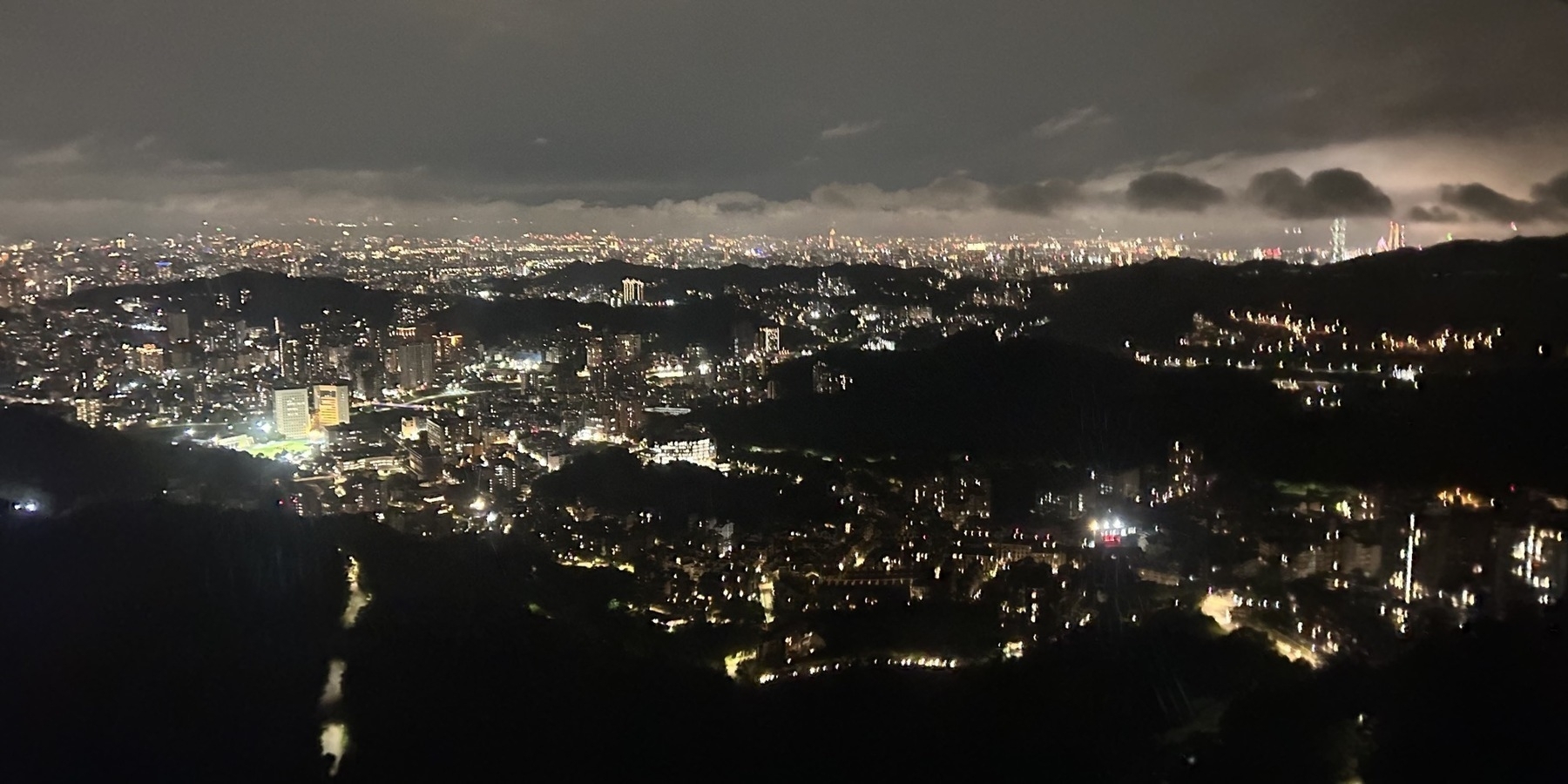
🚌🚃🚋🛫 Heading to YVR and then to Frankfurt! See you all in Germany 🇩🇪
Causal Islands next week!!🎉🎊🪩

Nice lively discussion about different communities of women and power throughout Japanese history booksonasia.net/podcast/b…
Wow 😳 Canada’s first ever tsunami tower is being built in BC
Hanging out with the monthly tech coffee crew this morning at Trees Cafe. Made a bunch more connections!
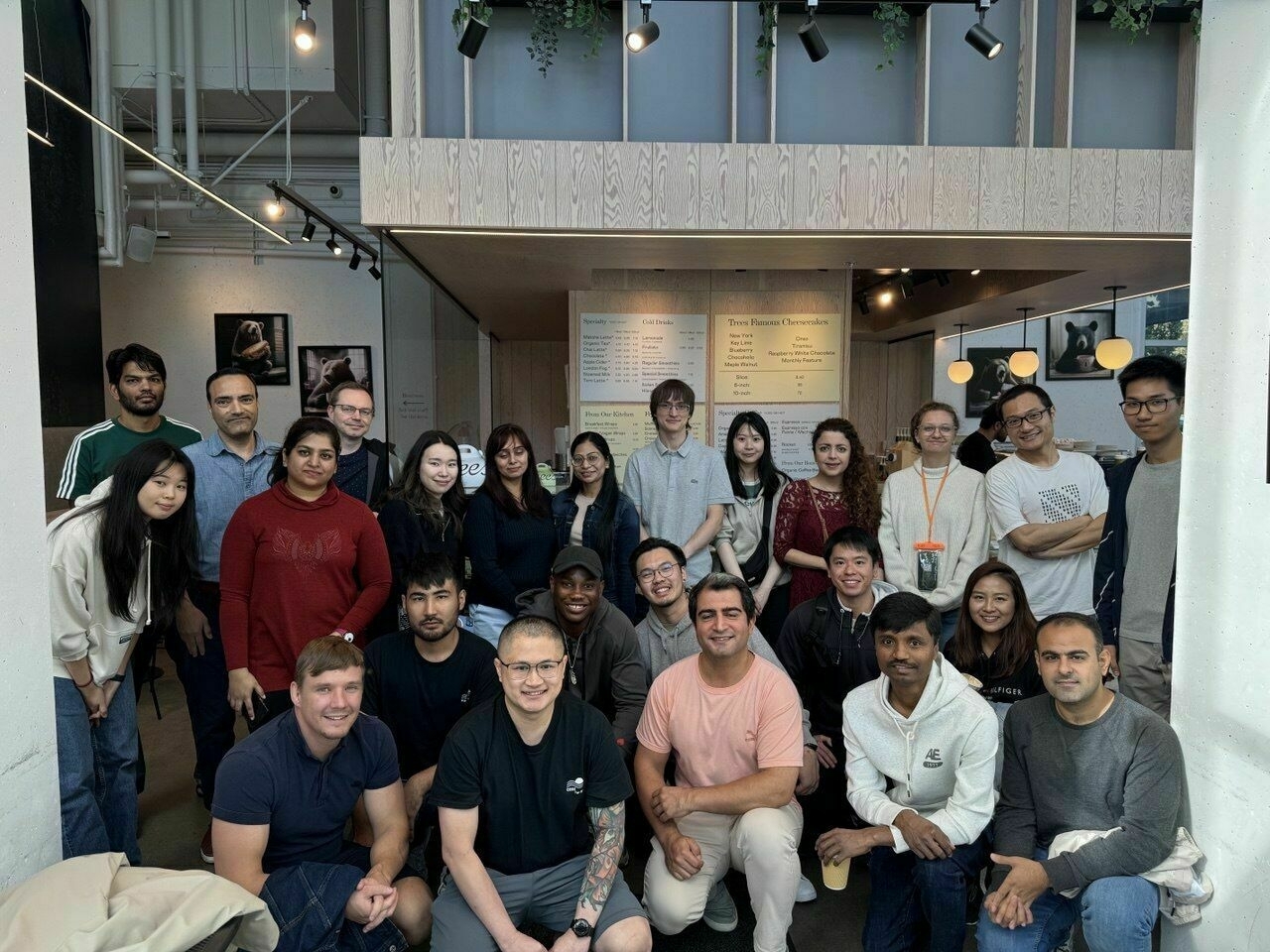
Went to Katsuya for… Korean Pizza 🍕

Got #DnD 🎲🐉⚔️🧛🏻♂️ tonight so did my #craigsgymclass early.
2 min planks are killing me bruv! 😩 How am I gonna get to 5🖐️⁉️
Okay, more Germany trip recommendation requests: what’s good in Mannheim? Also, thinking aboutut popping over to Strasbourg for a day. Any reccos for there?




